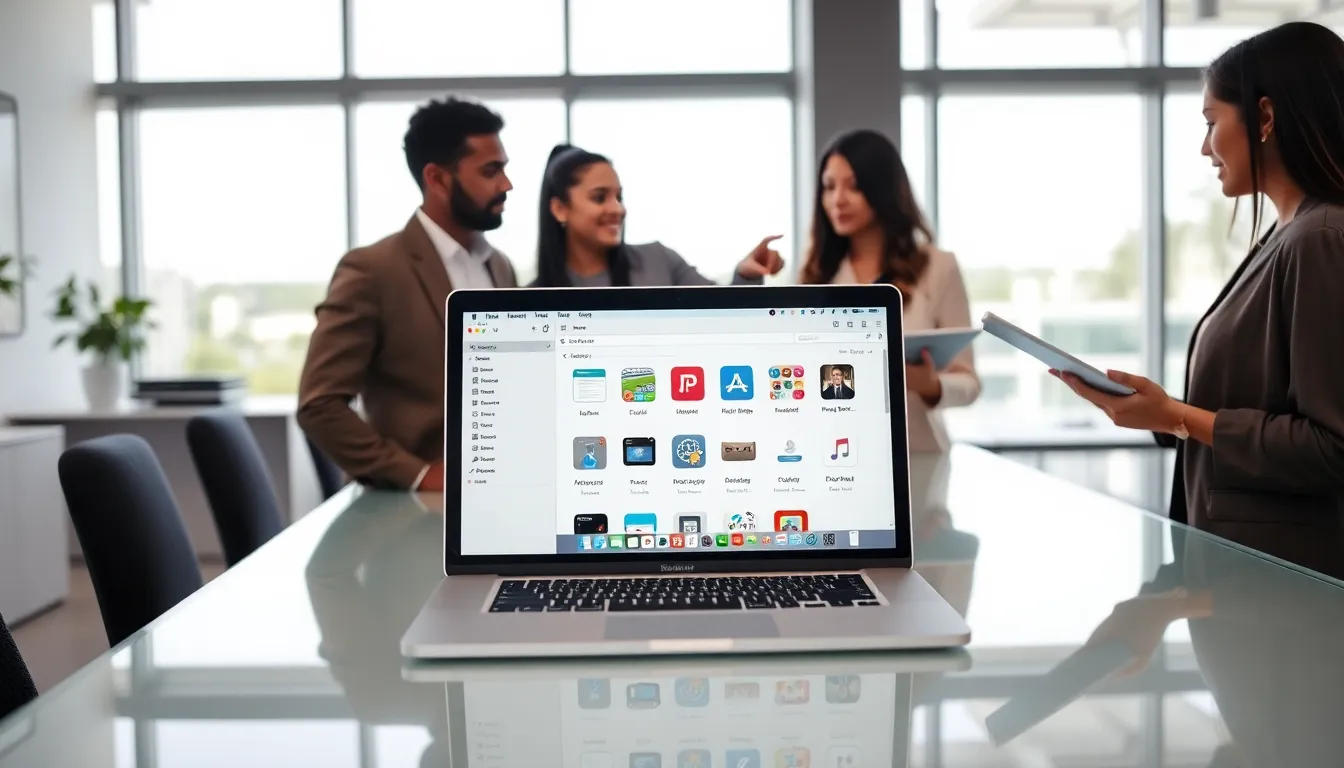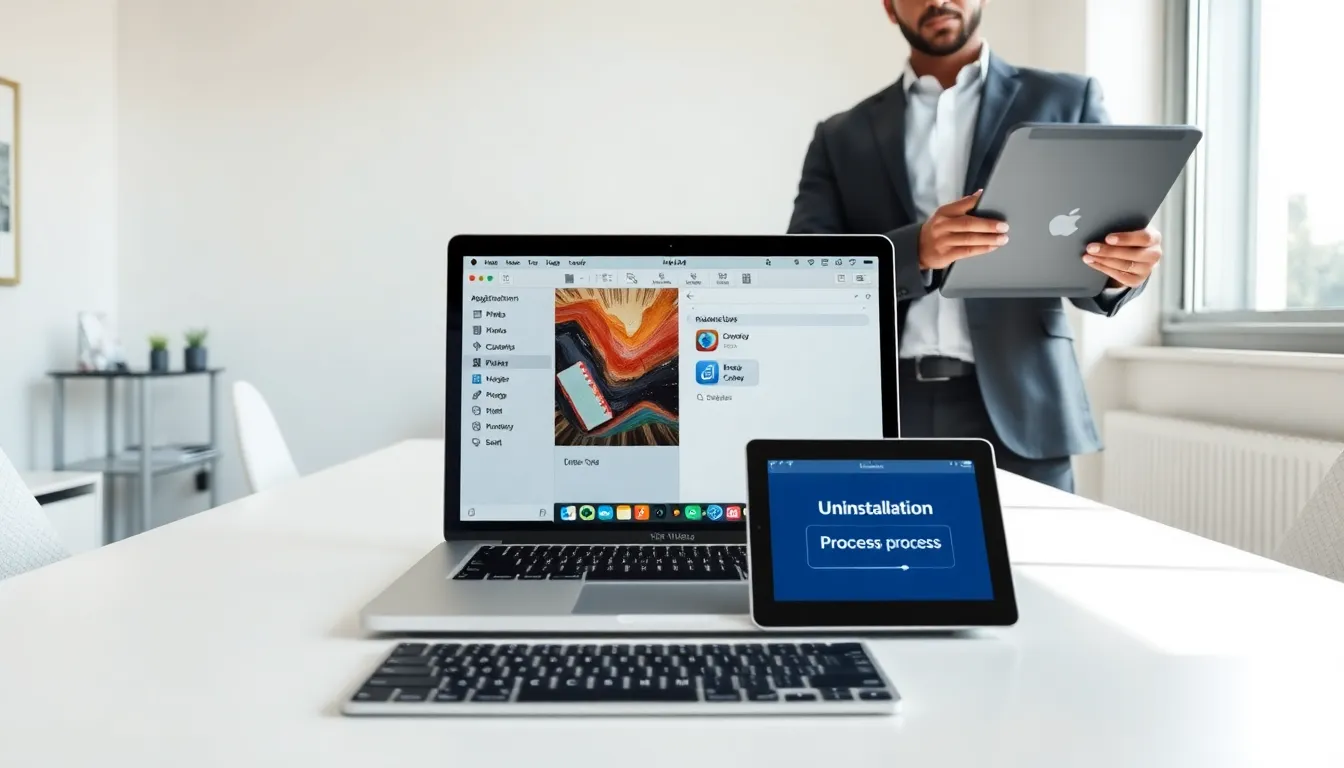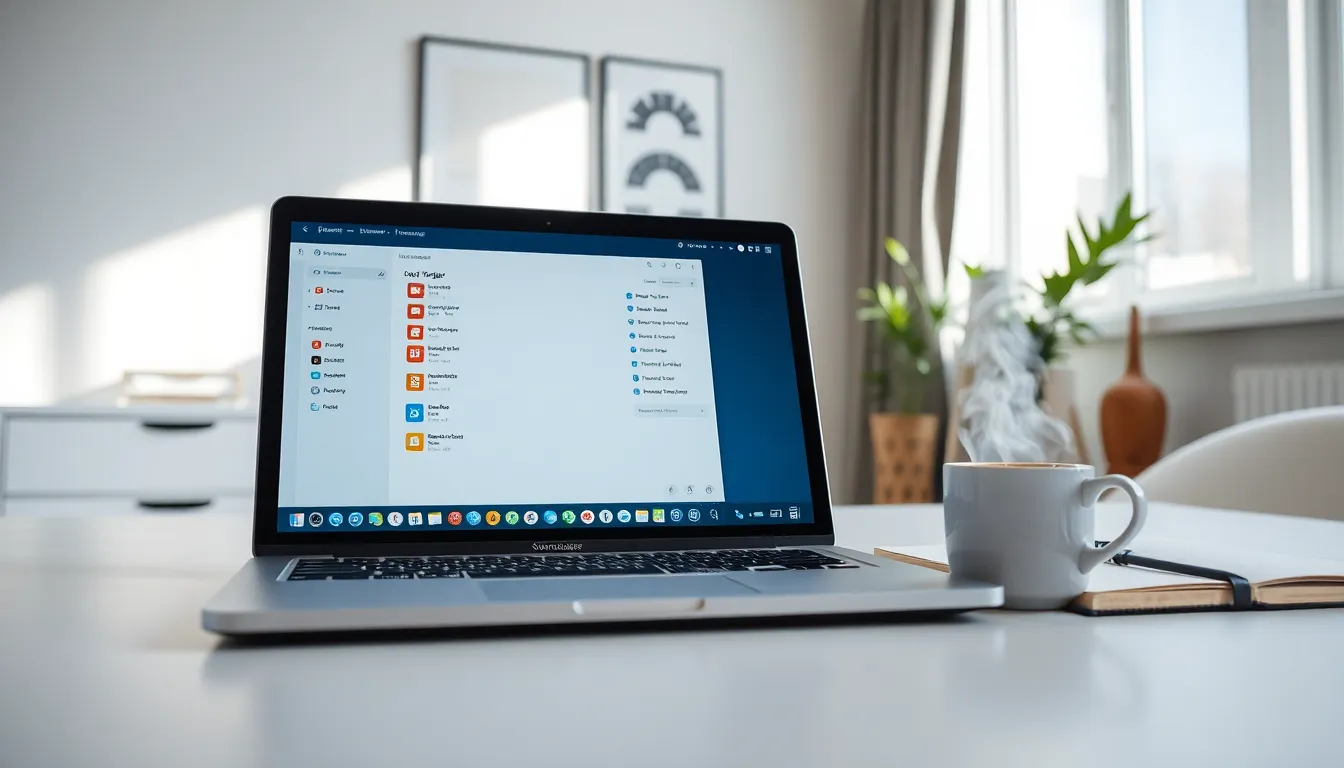Do you ever feel like your MacBook is hosting too many unwanted guests? Those apps cluttering your desktop are just like that friend who overstays their welcome. Don’t worry, it’s time to kick them out. In this guide, you’ll discover how to effortlessly remove apps from your MacBook while keeping your device clutter-free and running smoothly. So grab your digital broom, and let’s sweep out those pesky digital intruders.
Table of Contents
ToggleUnderstanding Mac Applications

Types of Applications on MacBook
Applications on a MacBook come in various shapes and sizes. There are native applications like Safari, Mail, and Messages designed for seamless operation within the macOS ecosystem. Third-party applications can change the game quite a bit, expanding functionality with programs like Microsoft Office, Adobe Suite, or even fun games. Each app serves a specific purpose, but they can also occupy valuable space on your hard drive.
Why You Might Want to Remove Apps
There are plenty of reasons to wave goodbye to certain applications. Performance issues, lack of use, or simply the need to regain storage space may compel someone to uninstall. Having a full, cluttered MacBook can slow things down and make life a bit more frustrating. Also, if you’ve recently upgraded to a newer version of an application, you might not need the old version hanging around as a reminder of the past. Understanding the purpose of each application can streamline the process and help make decisions easier.
Methods to Remove Applications
Using the Finder to Uninstall Apps
The Finder is your best friend when it comes to cleaning house. Open it up and navigate to the ‘Applications’ folder from the sidebar. Once there, you can browse through your collection. To remove an app, simply drag it to the Trash. If you get a warning that the app is in use, it means something’s running in the background, close those programs and try again. Empty the Trash to make that removal permanent.
Removing Apps from Launchpad
Launchpad is like the app drawer on an iPhone, it holds all your applications in one place. To remove an app from here, open Launchpad, locate the app you wish to uninstall, and perform a long press until the icons jiggle, similar to how you would on your iPhone. A small ‘X’ will appear on the top-left corner of the app icon. Click that ‘X’ and confirm the deletion. Pretty straightforward.
Using Third-Party Uninstallers
Sometimes, applications leave hanging files that can build up over time, much like crumbs after a snack. This is where third-party uninstallers come in handy. Programs like AppCleaner or CleanMyMac247 help sweep away embedded files along with the app. Follow their intuitive step-by-step processes to ensure all remnants are gone, giving you a clean slate.
Deleting System Apps and Pre-installed Software
While it’s possible to remove third-party applications easily, system apps like Safari or Mail come with their own set of rules. Most of these applications are built into macOS, meaning removal could affect system functionality. But, some system apps can be removed if you’re okay with diving into Terminal commands, advanced users may find this process manageable, but it’s not for the faint-hearted.
Before proceeding, ensure you back up your data. Many users prefer to hide these apps instead of removing them, streamlining their interface without risking any potential system issues. This approach lets you keep a tidy workspace while maintaining system integrity.
Ensuring Complete Removal of Apps
After uninstalling applications, it’s crucial to ensure complete removal. As mentioned earlier, some applications leave behind files scattered across the system. An uninstaller might take care of most of these, but checking manually will provide peace of mind. You can search for leftover files in the Library folder by navigating to Finder > Go > Go to Folder and entering ‘~/Library.’ From here, you can investigate folders like Application Support and Preferences, deleting files linked to the app you’ve removed. This ensures that what’s gone is truly gone.
Best Practices for App Management on MacBook
Managing applications is not just about removing them: it’s about maintaining a healthy ecosystem on your MacBook. Regularly evaluate the apps you frequently use. Establish a routine once a month or every few months to assess and uninstall applications that no longer serve a purpose. Keeping your MacBook organized and running smoothly will enhance performance and keep frustrations at bay. Use smart folders to categorize your applications, making navigation simpler and faster.






